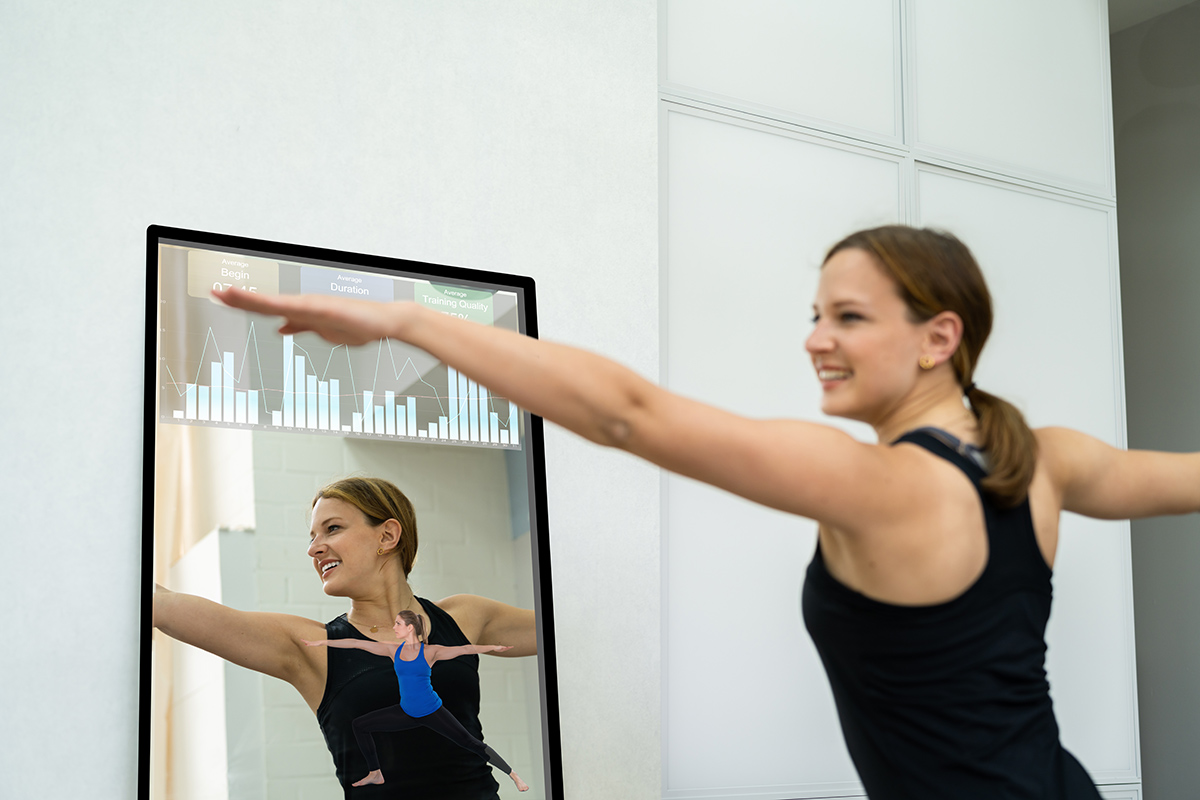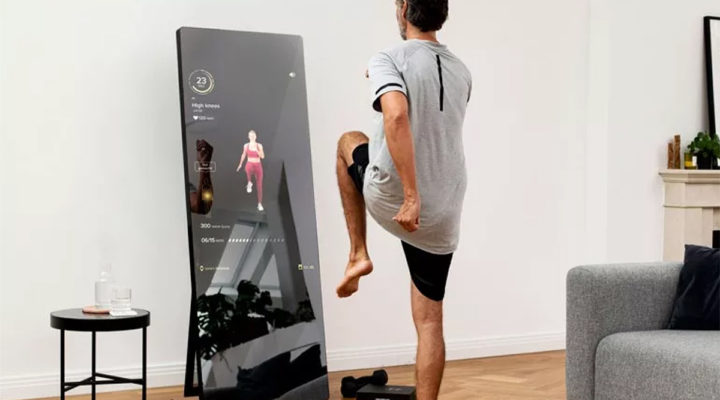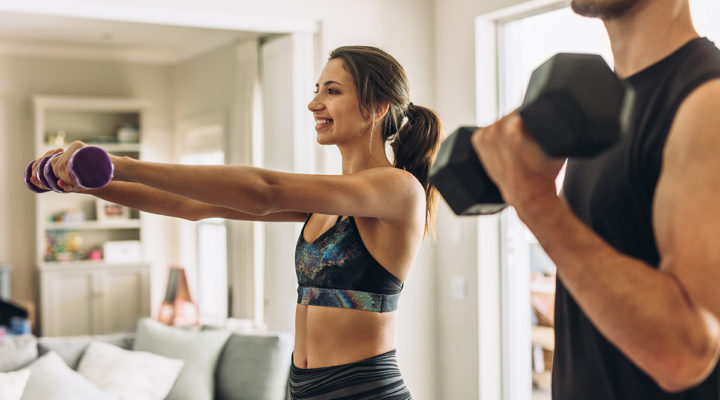Are Smart Mirrors the Future of Home Fitness?

Ever since the days of living rooms workouts during lockdown, home exercise equipment has experienced a major boom. Even with gyms now reopened, more of us are embracing the hybrid fitness trend, where we supplement our regular studio classes with a lunchtime sweat at home.
While you don’t necessarily need lots of fancy kit to reap the benefits of a workout, you only need to look at the rise of the Peloton Bike and Peloton Tread to know that connected fitness equipment is gaining popularity.
The latest innovation that’s tipped to be the next big thing in the world of luxury fitness tech? The smart mirror. As well as helping you break a solid sweat, it promises to take up less precious space in your home than its high-tech rivals.

Image: © Vaha
What are smart mirrors?
In a nutshell, smart mirrors double as a digital fitness coach. While they look and function just like a regular full-length mirror, they also have a full-HD screen hidden under the reflective surface that allows you to beam a live personal trainer into your home. From here, you can follow your instructor in real-time, while still keeping an eye on your form.
Connected mirrors have been gaining popularity in the US, where Tempo Studio and Tonal mirrors have been keeping pace with Peloton. In the UK, German fitness brand VAHA is the first company to bring a smart mirror to the market.
Smart mirrors have various unique features, but the functionality is fairly similar across all of the brands. The screens come preloaded with thousands of workouts to pick from, as well as live group classes that you can book and join from home. Similarly to a boutique gym, you can cross-train over various disciplines such as strength, cardio, barre, pilates, yoga and breathwork.
Once you’ve paired your mirror via bluetooth, it’s a case of downloading the accompanying app where you can browse and book your sessions. As well as having an interactive touchscreen, the mirrors have a built-in, front-facing camera and microphone that allows you to interact with your PT while you’re working out.

What are the benefits?
The major selling point of smart mirrors is that they don’t make your home feel like a gym. Even though the design of fitness machines has vastly improved in recent years, there’s no getting around the fact that static equipment can take up a lot of space and look fairly ugly.
Smart mirrors can be wall-mounted so they’re off the floor and have a minimal footprint in the home. If you’re renting though, you can still invest, as some have the option to be floor-standing too.
In lockdown, we all learned that screen size is important. The VAHA X comes in at 43 inches, which is a serious upgrade from squinting at an instructor on a smartphone or laptop. As it’s reflective too, you can see yourself during the workout and correct your form as you go.
For those who usually rely on YouTube workouts, the huge range of pre-loaded classes means you’ll never get bored of doing the same classes on repeat. The virtual training sessions are as close to a real life PT session as it can get, which means that you’re always progressing in your fitness goals too.
Crucially, you’re working out face-to-face with an instructor, without the need to trek to the gym in cold weather. Smart mirrors can also show performance-related data from a wearable device on the screen, as well as a timer and a leaderboard of the other users taking the class with you. You can also connect some mirrors to pre-loaded Spotify playlists, giving the feeling of being in a boutique studio.
So what’s the downside? Well, they aren’t cheap. The Vaha mirror costs £1,950 to buy and then requires a further £39 monthly subscription for access to classes and one free personal training session per month. That said, if you’re someone that pays top whack for classes at Barry’s Bootcamp or Orange Theory, the monthly subscription works out a good deal – once you’ve forked out for the mirror, of course.
The only other thing to consider is whether you have the space in your home to be able to make the most of it. Unlike other stationary fitness equipment, you need a fairly large floor space to complete the classes, which might not be possible if you’re in a studio flat. Whether you invest or not though, the trend for connected fitness equipment isn’t going anywhere soon.


















